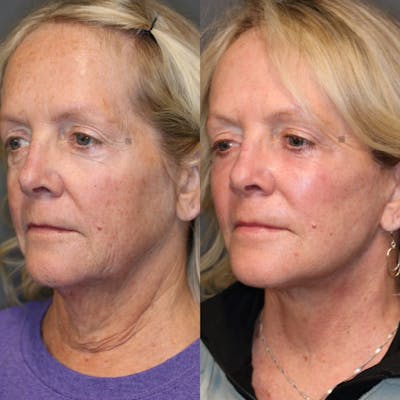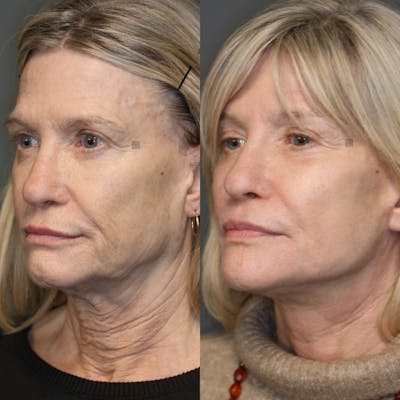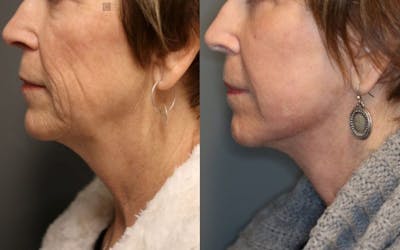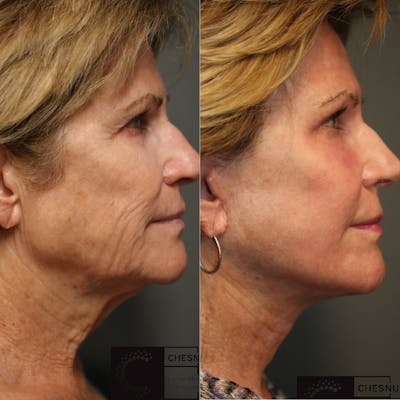
- EnigmaLift - Facelift
Facelift access and incisions are a perfect microcosm of the interplay between art, science and attention to detail involved throughout the entire face and neck lift procedure. It is a common question from patients about what they look like when they are healed, and every experienced facelift surgeon has his or her own style for making these areas completely inconspicuous.
Here we see what access area and incision look like at one week (you can still see the laser thermal zones, even on her ear lobe!) and at three months. My main areas of focus to make that scar go completely away are:
1. Using a deep plane in my EnigmaLift technique to put zero tension on the skin edge and instead have all the tension directed vertically on raising the soft tissue fat pads back up to where they used to live, not relying on any skin pull to do so.
2. Purposefully protecting the cartilage at the tragus and then custom shaping and sculpting the tragal flap during the repositioning phase.
3. Custom tailoring the area to fit perfectly together. The earlobe is perfectly positioned, avoiding one of the telltale signs of a facelift. This takes a significant amount of time and energy beyond what is standard, but is well worth the effort!



















